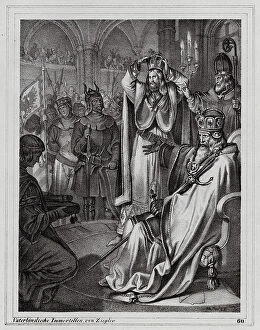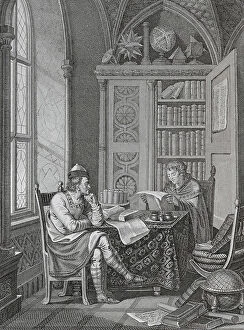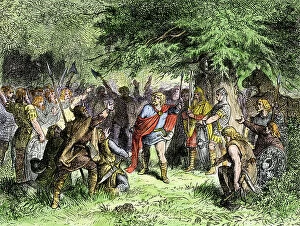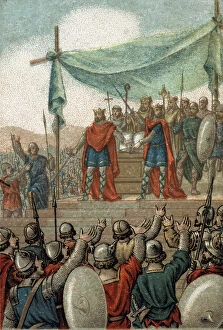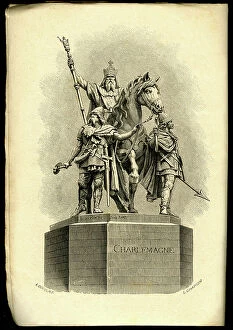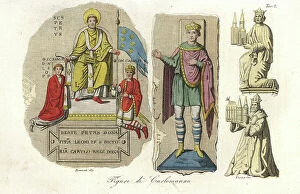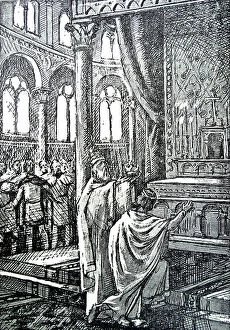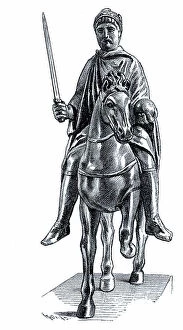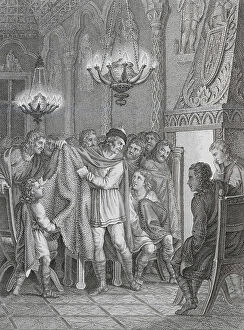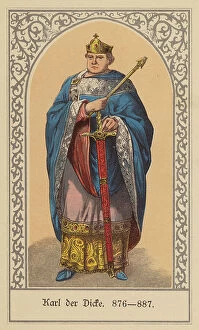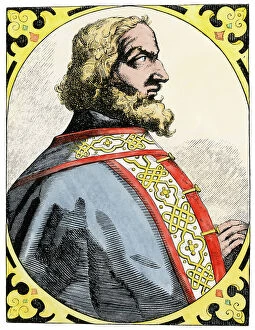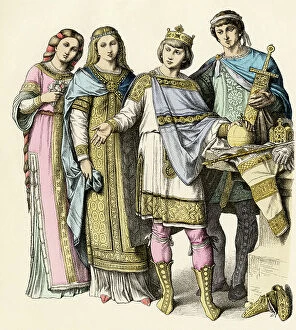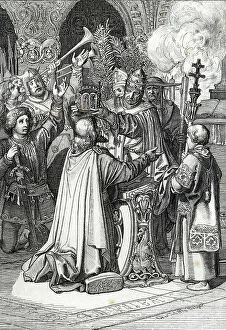Carolingian Dynasty Collection
The Carolingian Dynasty, led by Emperor Charlemagne, left an indelible mark on history
All Professionally Made to Order for Quick Shipping
The Carolingian Dynasty, led by Emperor Charlemagne, left an indelible mark on history. Known for his immense interest in education and learning, Charlemagne's patronage of scholars earned him the title of the patron of schools. In one captivating engraving, we see Emperor Charlemagne visiting a school, surrounded by eager children who are benefiting from his passion for education. French King Charles III, also known as Charles the Simple, ruled during a crucial period from 879 to 929. An enchanting engraving showcases this king's regal presence and highlights his significance within the Carolingian Dynasty. Another remarkable depiction captures the coronation of Charlemagne himself. This miniature artwork from around 1460 immortalizes the grandeur and power associated with this iconic ruler. A bronze statue further commemorates Charlemagne's legacy. Standing tall and majestic, it serves as a reminder of his influential reign and lasting impact on European history. King Louis IV and King Lothar I are also featured in an intriguing engraving from 1796. Their presence alongside their illustrious predecessor emphasizes their connection to the Carolingian Dynasty and its enduring influence. In another illustration by Edouard Francois Zier, we witness Charles the Great blessing his nephew Roland's engagement to Aude. This portrayal not only showcases familial bonds but also hints at Charlemagne's role as both a leader and protector within his dynasty. Charlemagne was not just a scholar; he was also a formidable warrior who engaged in numerous battles against Saxons. Feather drawings depict these conflicts while emphasizing his military prowess during these tumultuous times. Yet amidst war and conquests, Emperor Charlemagne always found time for education. Another drawing portrays him founding schools where he meets children eager to learn under his guidance—a testament to his commitment to knowledge dissemination throughout society. One particularly poignant moment is captured when The Frankish King bestows upon his nephew the legendary sword Durandal.

